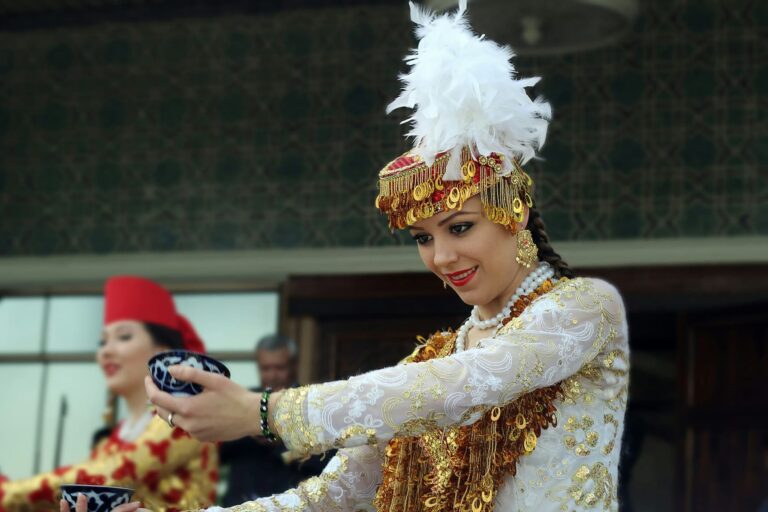
We are reader-supported and may earn a commission on purchases made through links in this article.
Samarkand is well-known as the historical and cultural center of Uzbekistan, a double land-locked country in Central Asia which the historic Silk Road used to cross through. For the big national New Year of Nawruz, I took advantage of the long weekend and headed over the Uzbek border from Tajikistan, the neighboring Central Asian country where I currently live.
At the Charbagh bus terminal, just north of the Tajik capital city of Dushanbe, amidst a horde of taxi drivers fighting to fill their car first, I found Akmal who agreed to bring me to the Uzbek border for 150 Tajik somoni (approximately $13.67 USD).
With a family of five stuffed in the back of the car and a dozen plastic bags of fresh, round bread, we set off along the windy mountainous roads.
A Journey Through Tajikistan’s Roads
The first time a car in the opposite direction flashed their headlights at us, I assumed it was someone Akmal knew. However, when he immediately stepped on the brakes, all of us lurching forward in our seats suddenly, I began to suspect otherwise.
Sure enough, after a few seconds, a policeman in front of his car with a speed gun aimed at us appeared and we had to pull over. Akmal fished out some coins from his pocket, went to meet the officer, and as we watched curiously from the rearview window, they shook hands, and Akmal returned without the coins.
10 minutes later, it happened again. This time, a policeman flagged us down with a red baton and as before, Akmal immediately dug out some change and came back empty-handed. He heard our chuckles, and shrugged his shoulders, “Tajikistan…!” and continued driving.
Halfway to the border, we entered the Anzob tunnel which I later on learned is (half-jokingly) referred to as “the Tunnel of Death”. For over three miles, in near pitch-darkness, we barreled down the dusty tunnel under the mountains, twisting and turning dangerously close to the walls, and oncoming traffic blinding us through the exhaust build-up.
A Straight-Forward Border Crossing
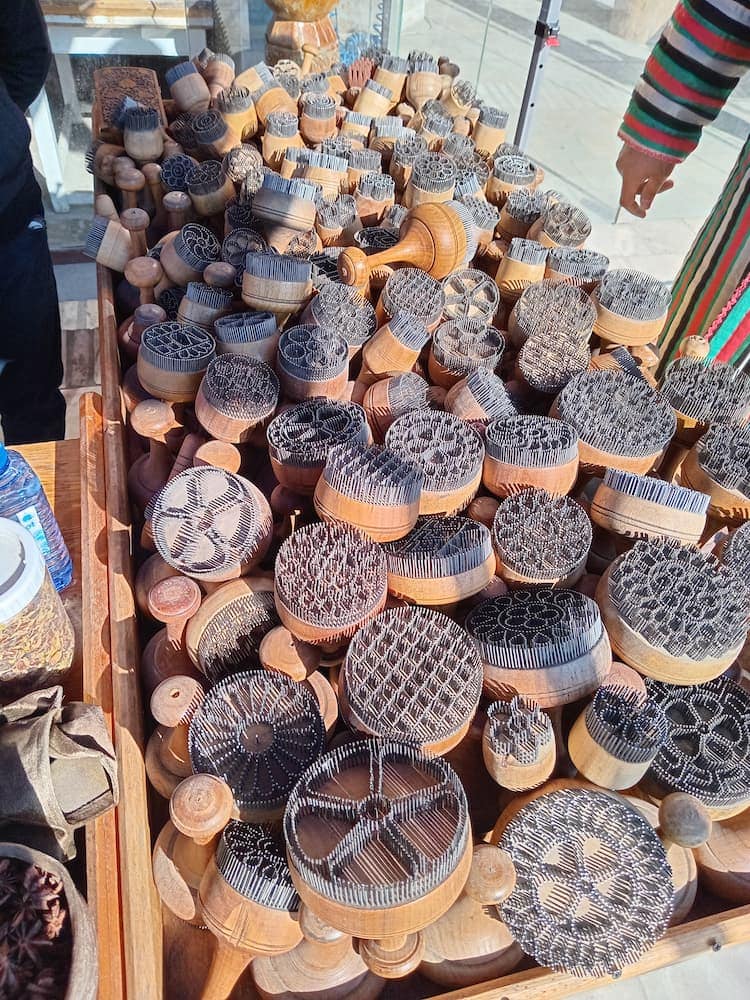
Finally, we reached the land border crossing in one piece, and I bid farewell to Akmal. On the other end of several checkpoints, I jumped in a marshrutka, the tiny minivans that serve as public buses, for 40,000 Uzbek soum (around $3.17 USD) to Samarkand. Passing white Chevy after white Chevy, I finally asked the driver if there was a reason for their ubiquity.
Via Google Translate, he responded that Chevrolet had been nationalized years ago, and a heavy tax was intentionally imposed on all other car brands. In addition, the color white was chosen to market the cars to Turkmenistan, where the president has infamously banned non-white vehicles in the capital. Then, the driver went back to casually scrolling TikTok videos of deadly snakes in Australia while flying down the highway.
The Shakhi Zinda Necropolis
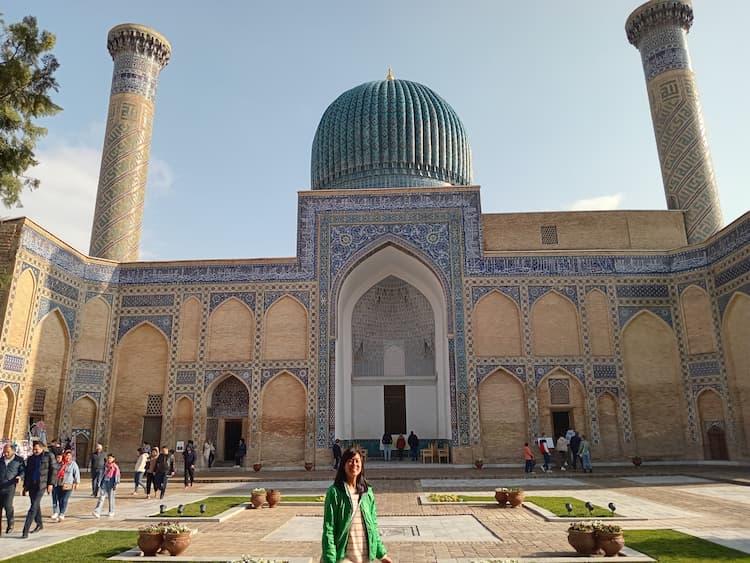
In town, across the road from my accommodation was my first destination- the magnificent Shakhi Zinda necropolis. Known for housing the tomb of the prophet Muhammad’s cousin, these towering structures are covered in glazed blue terracotta which shone brightly in the sunlight.
At the top of the stairs, after paying the entry fee of 40,000 soum, I paused to borrow one of the floral head scarves available for female visitors. When the cashier saw me struggling, she graciously came out from behind the desk to wrap it securely around my head like an expert.
Inside each tall building were high ceilings with every inch covered in elaborate tilework. The other tombs were for such historical figures as the mother, wife and sisters of Amir Timur, sometimes called Tamerlane, the most famous military commander and leader in Central Asia.
His regional influence is still so great that any association with him warrants recognition- I grinned when I walked past a caption identifying the tomb of his wet nurse.
Plov in the Bazaar
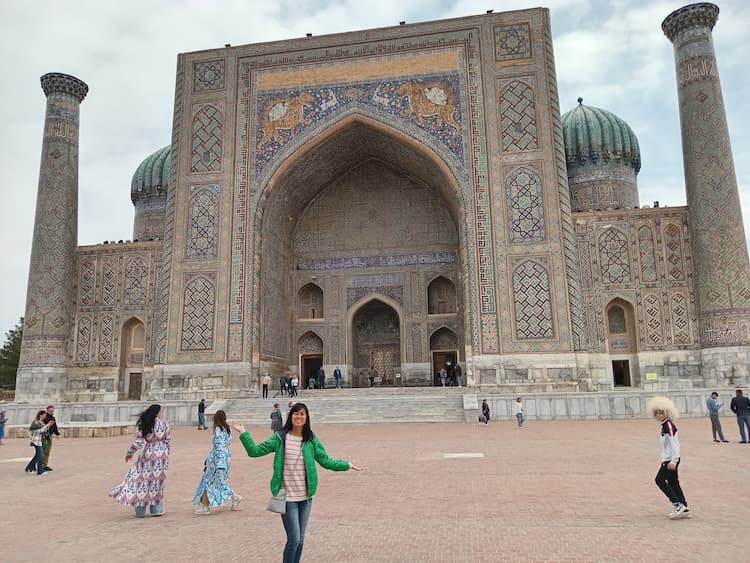
Down the street, the entrance to the major marketplace – the Siyob Bazaar – faced the major pedestrian street, Tashkent Street. Tables lined up in rows under a partial covering were filled with ceramic Uzbek figures, magnets, and colorful fabric.
Another section featured canvas sacks piled high with colorful spices, herbs, cardamom, saffron, grains and beans. I meandered through the busy crowds, ignoring the cries of “девушка! Девушка!” (meaning “young woman”), and followed my nose until I found the food section.
I imagined that normally, around lunchtime, it would have been packed and bustling with hungry customers and couples resting from all the shopping. However, because it was Ramadan, there were just a few other tourists and families feeding their young children who aren’t old enough to fast yet.
I ordered the traditional rice dish of plov, featuring lamb, carrots, chickpeas and raisins, while I waited for my friend to arrive. Since the massive pot of plov had been prepared in advance of the lunch rush, a steaming plate arrived on my plate within seconds.
Patiently, I continued to wait for my friend, though a low murmuring behind me drew my attention. I looked up to see the waiter and the cook, watching me with grave concern.
“No eat? Plov fresh! No like?”
I obligingly ate a few bites until they seemed reassured the delicious food wouldn’t be eaten cold.
Uzbek Artisans

After my friend arrived and ate, we set off for the traditional handicraft market. The two-story space had an open courtyard and every type of artisan imaginable. A leatherworker and his assistant pounded holes into freshly tanned belts.
A silversmith proudly showed off finely crafted earrings and bracelets in a glass case. However, Zuhrob, a painter, was the most excited to engage with us.
Many years ago, he visited the “Sumatina” museum, which we understood, after a few minutes, was the Smithsonian in Washington D.C. “Then we go to Santa Fe, big international fair there. I show my ceramics, so many people from different countries”. It reminded me that I had, in fact, heard other artisans mention that fair before.
“We get idea for Christmas tree ornaments from there. See, in shape of national fruit.” He held up some thin pomegranate-shaped paper mache ornaments with ribbons, finely painted in blue curlicues.
“They are only fruit to have corona, you know?”
I paused and looked at my friend, seeing the same thought run through her mind – It’s possible for animals to get COVID-19…surely, fruits can’t get it too?
Seeing our confusion, he repeated, “Corona, corona. This.” He pointed at the blossom end of the pomegranate, and it clicked. “Oh! The crown…!”
“Yes, and it’s so special, the seeds inside are many, you can’t count. Like your money! That’s why it’s national fruit.”
An Iftar for Ramadan
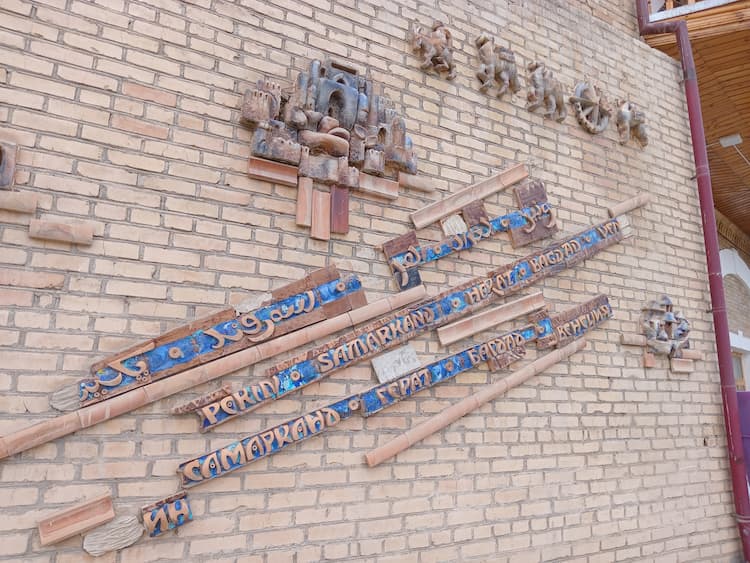
He waved us off as we rushed to get ready for dinner that evening. My friend’s colleague had invited us to join their combined iftar (the breaking of the fast during Ramadan), Nawruz (Persian New Year, celebrated the week of the Spring Solstice) and birthday celebration for their grandfather. We knew it’d be important to be on time since every minute mattered for fasting.
We arrived at the restaurant to find two long tables, segregated by gender, in a semi-private room. Everyone greeted us with the same mix of curiosity and shyness, placing a hand to their chest and giving a small nod, as is customary in this region.
On the tables, we looked around in awe at the display of dates, soup, fried eggplant, samsas, fruit platters, salad and more.
Cultural Insights and Celebrations
Our host tasked her young English-speaking niece, Iroda, to sit at the end of the women’s table with us. “I spent a few months in Paris, and I liked the experience but honestly, I wouldn’t want to live there long term, or raise my kids there. People show so much of their body and it smells like weed everywhere…!”
After the shashlik (skewered meat) came out, starting with the oldest male guest, each person gave a toast, varying in length to the birthday boy.
The four male cousins, aged 18, 20, 25 and 26, got a big laugh with their speech, and we asked Iroda to translate what was so funny – they’d promised to get married this year as a gift to their grandfather.
After the birthday cake, Iroda invited us to an iftar the next evening at their uncle’s home, since it was his muchal. In the Uzbek tradition, every year has one of 12 repeating animals in a cycle, not dissimilar from the Chinese Zodiac, with the exception of a fish or crocodile instead of the dragon.
Each Nawruz (the beginning of a new year), someone celebrating their muchal (turning 12, 24, 36, etc.) would host a big gathering at their home and treat their family and friends.
Grand Finale at Registan Square
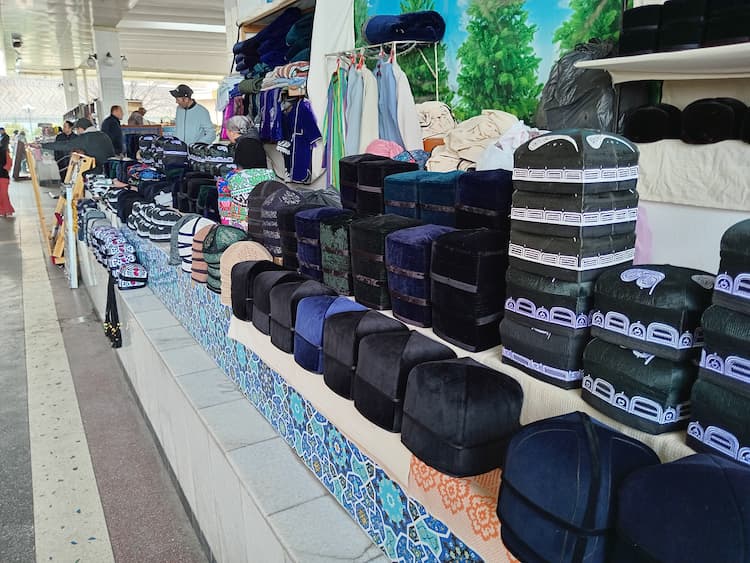
We excused ourselves from the dinner to make the final stop of the day, the most photographed site in town, Registan Square. I understood immediately what all the fuss was about.
The three massive madrasas (a Muslim school) featured enormous azure grandiose facades, and the largest stood 184 feet wide by 266 feet. Tall, thin minarets accompanied each one, and the whole surface was covered with tiles, golden trimming, mosaics, and images such as animals, sun gods, and stars.
The nightly light show began at 8 pm sharp, and traditional songs blared out from speakers placed all around the plaza, some about the city of Samarkand itself, as a rainbow of colors flashed across the front of the madrasas.
The viewing platform and steps in front of the plaza were jam-packed with international and local visitors, vendors selling light-up and heart-shaped balloons and clumps of kids flying their kites.
I breathed in the fresh air and sounds of rattling party bikes on the stone road in the distance, mentally ingraining the “Nawruz Mubarak!” projection into my memory.
If You Go:
Download Yandex Go, the most popular taxi order app in the country. Taxis don’t use a meter, so you would need to bargain. They’re fairly good at reading a map, though if you want to be safe, put in the closest landmark to your location.
Keep in mind that the currency goes into the thousands, so locals shorthand prices to say “35” if they mean to say “35,000 soum”.
Many nationalities still need a tourist visa, obtained beforehand to enter the country. Beware that when you’re uploading the necessary documents into the portal, the photo specifications are precise and unforgiving. There are particular photo quality and size requirements as well as proportion specifics that must be met.
Read More:
Author Bio: Annie Elle is originally from Los Angeles, though currently lives in Dushanbe, Tajikistan. She has lived overseas since 2011, working in various aspects of international education. Annie enjoys playing volleyball and exploring new foods and art forms in her free time.
- Palawan Perfection: Exploring the Philippines’ Last Ecological Frontier - July 13, 2025
- A Journey to Ashland, Oregon’s Shakespeare Festival - July 13, 2025
- The Ultimate Guide to Cairo’s Top Three Museums: Which Should You Visit? - July 12, 2025

